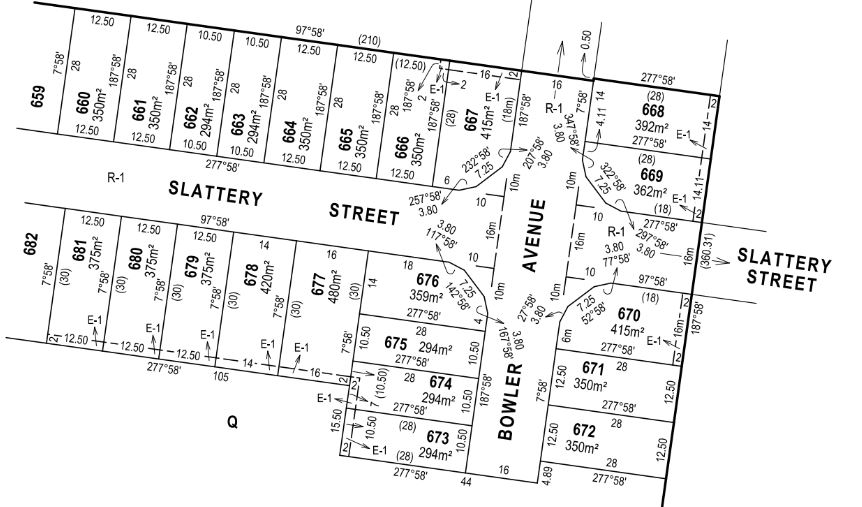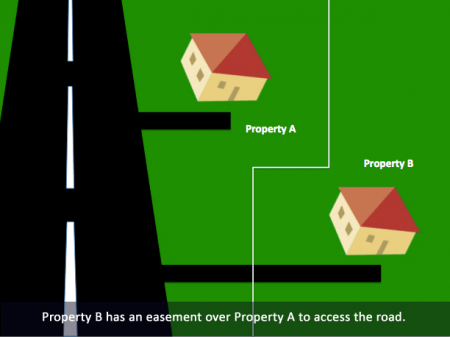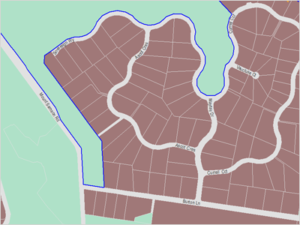
Understanding Easements in Property Law
When buying or selling property in Queensland, it’s essential to be aware of any easements that may apply to the land. An easement is a legal right that allows someone to use a part of your land for a specific purpose, like access or utility maintenance. While easements are common and often necessary, they can impact property use, value, and resale potential. This article will explore what easements are, how they work, the types of easements in Queensland, and how Sunstate Conveyancing can assist you in navigating property transactions involving easements.
What is an Easement?
An easement is a legally binding right that allows one party to use a portion of another person’s land for a particular purpose. Easements are typically created to allow access, facilitate the installation or maintenance of utilities, or preserve certain rights, such as drainage or access to a shared driveway. They are registered on the property title and are binding on current and future owners of the property.
In Queensland, easements are common in both residential and commercial properties. They can vary significantly in terms of their impact on property usage and development, which is why understanding the specifics of any easement on your property is crucial.
Why are Easements Important?
Easements are important for several reasons:
Access and Utility: Easements provide essential access for utility services, such as electricity, water, and gas. Without easements, it would be challenging for utility companies to maintain infrastructure.
Property Rights: Easements clearly define the rights of property owners and others who may need to use the land.
Impact on Property Value: Easements can affect a property’s value and desirability, depending on their nature and extent.
Legal Obligations: Easements are legally binding, and property owners must respect the rights of those who hold easements on their land.
Understanding easements is crucial for property buyers and sellers, as easements can affect property use and value, potentially impacting buying or selling decisions.
Types of Easements in Queensland
Easements can vary depending on their purpose. Here are some of the most common types of easements in Queensland:
1. Right of Way Easement
A right of way easement allows someone to pass through a specific area of your property. This type of easement is often used for shared driveways or access paths, enabling neighbors or service providers to reach their property or facilities.
2. Utility Easement
Utility easements give utility companies the right to access a portion of your land to install or maintain infrastructure, such as power lines, water pipes, or gas lines. Utility easements are crucial for ensuring uninterrupted services but may limit certain developments on your property.
3. Drainage Easement
A drainage easement allows water to flow across or under the land, preventing waterlogging and ensuring effective stormwater drainage. These easements are common in suburban areas where stormwater management is essential.
4. Easements for Sewerage
Sewerage easements permit sewer lines to run through the property. Sewerage easements are similar to utility easements, ensuring that sewer systems function effectively while giving access rights to maintenance crews.
5. Access Easement
Access easements are often used for properties without direct road frontage, allowing property owners to access their property via another’s land. These easements can be critical for landlocked properties or areas with challenging terrain.
6. Conservation Easement
A conservation easement is created to protect certain natural features, such as forests, wetlands, or wildlife habitats. Conservation easements restrict certain activities on the land to preserve its ecological value.
How Easements are Created
Easements can be created in a variety of ways, including:
Agreement Between Parties: Easements can be established by mutual agreement between the property owner and the easement holder. For instance, neighbors may agree to create a right-of-way easement for access.
Through Subdivision: Easements are often created when land is subdivided. For example, a developer may establish an easement for shared utilities or access paths in a newly developed area.
By Necessity: Some easements are created by necessity, such as for landlocked properties that require access across neighboring land to reach public roads.
Statutory or Compulsory Easements: In some cases, government agencies or utility companies may create easements without the property owner’s consent if it serves the public interest, like for power lines or sewer systems.
Each method has its legal implications, and it’s crucial to understand how an easement was created, as it affects the rights and responsibilities of both parties.
Rights and Responsibilities of Easement Holders and Property Owners
The existence of an easement affects the rights and responsibilities of both the property owner and the easement holder:
Easement Holder Rights: The easement holder has the right to use the specified area for the purpose outlined in the easement agreement. For example, a utility company can access its infrastructure on the land whenever necessary.
Property Owner Rights: The property owner retains ownership of the land but must allow the easement holder to use the area as specified. They cannot obstruct or interfere with the easement holder’s rights.
Maintenance and Upkeep: In many cases, the easement holder is responsible for maintaining the area. For instance, utility companies may be required to repair any damage caused during maintenance activities.
Understanding these rights is essential for both parties to avoid conflicts and ensure smooth property use.
How Easements Affect Property Value and Saleability
Easements can have a significant impact on property value and saleability:
Property Use Limitations: Easements may limit how certain areas of the property can be used, which can reduce its functionality and appeal to potential buyers.
Development Restrictions: Some easements restrict building or landscaping within the easement area, limiting potential property improvements.
Buyer Perception: Many buyers view easements as a drawback, as they involve sharing property rights with others. This perception can reduce buyer interest or lead to lower offers.
Future Obligations: Easements create obligations that future property owners must adhere to, which can make the property less attractive to those seeking full control over their land.
When purchasing or selling property with easements, it’s essential to work with a knowledgeable conveyancer to understand how the easements impact the property’s value and use.
How Sunstate Conveyancing Can Help with Easements
Navigating property transactions with easements can be complex, but Sunstate Conveyancing offers expert guidance to make the process straightforward and stress-free. Here’s how we can help:
Easement Searches and Due Diligence: Our team conducts thorough property searches to identify any easements on the land. This due diligence helps buyers understand the full scope of their purchase.
Explaining Easement Terms: We explain the legal implications of easements to our clients, ensuring they know their rights and obligations as property owners.
Negotiation and Advice: If easements raise concerns during a transaction, we provide advice on how to proceed and assist in negotiating terms that protect our clients’ interests.
Title Review and Documentation: We review property titles to confirm that easements are clearly documented, ensuring transparency and compliance with Queensland property law.
Dispute Resolution: In the event of an easement-related dispute, Sunstate Conveyancing can help mediate and resolve conflicts, protecting our clients’ rights and ensuring fair outcomes.
With Sunstate Conveyancing, clients benefit from our extensive experience, industry knowledge, and commitment to delivering high-quality, customer-focused service.
FAQs About Easements
1. Can an easement be removed from a property?
Yes, in some cases, easements can be removed if both parties agree, or if the purpose of the easement is no longer applicable. Legal action may be required, and it’s best to consult with a conveyancer or property lawyer.
2. Do easements expire over time?
Some easements may have expiration dates, while others are permanent. Easements created by necessity or statutory easements are usually long-term or permanent.
3. How can I find out if a property has an easement?
Property titles and deeds often list easements. A conveyancer can conduct a title search to identify any easements attached to a property.
4. Do easements affect property value?
Yes, easements can affect property value, depending on their impact on property use, development potential, and buyer perception.
5. Are easements transferable to new owners?
Yes, easements are typically attached to the property title, meaning they transfer to new owners when the property is sold.
Easements are a crucial aspect of property ownership in Queensland, impacting everything from access to property value. Whether you’re buying, selling, or simply want to understand how an easement affects your land, it’s essential to work with an experienced conveyancer. Sunstate Conveyancing offers comprehensive support for clients dealing with easements, ensuring they make informed decisions and understand their rights and responsibilities.
With Sunstate Conveyancing, you gain a trusted partner in your property journey. Our team’s dedication to transparency, expertise, and customer satisfaction means that every client receives personalized service tailored to their needs. Contact us today to learn how we can assist you with your conveyancing needs.
This is general advice only.





